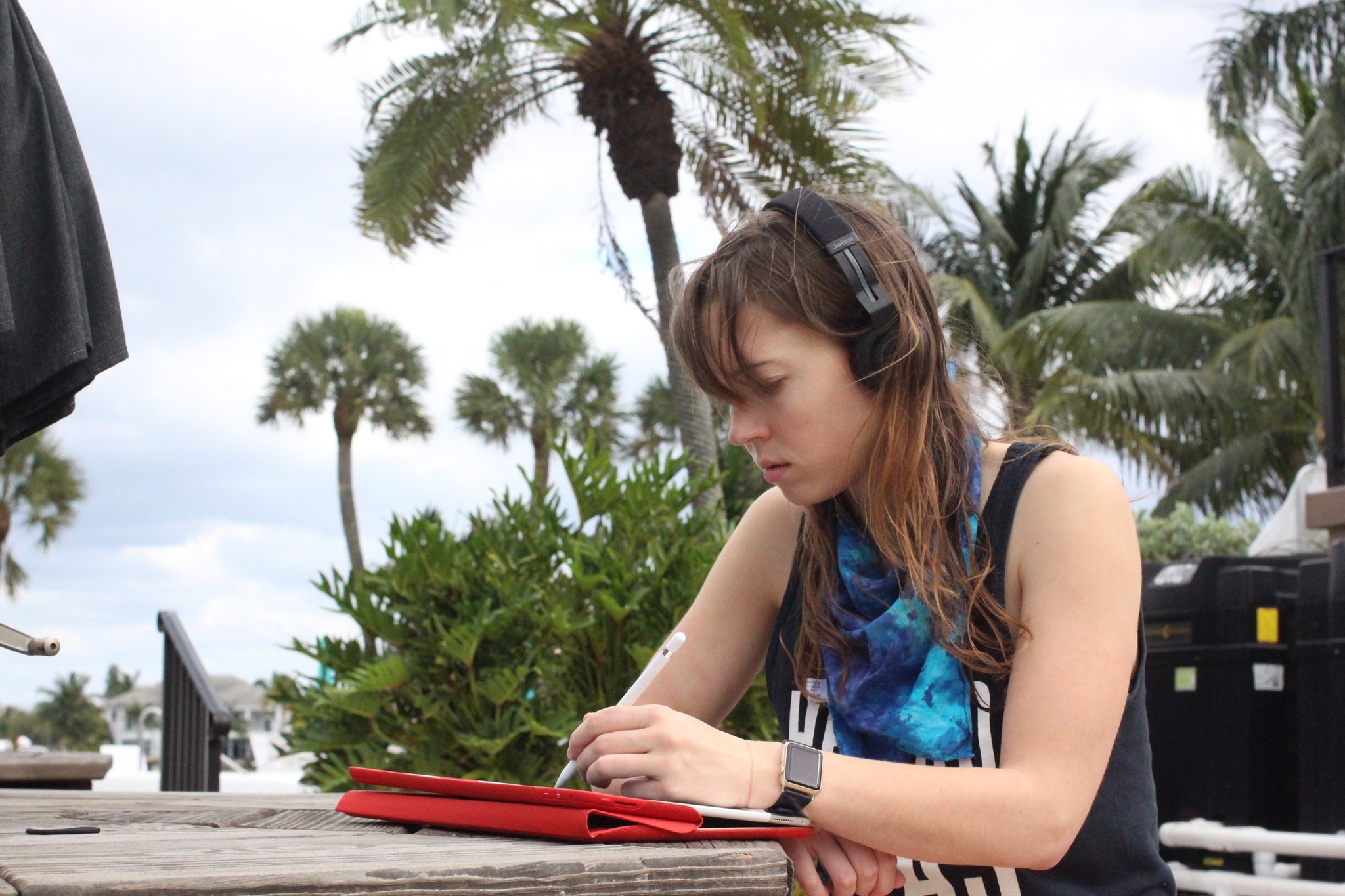Astropad Studio vs Duet Pro: Which second-screen drawing tablet for iPad Pro reigns supreme?

When it comes to digital drawing on the iPad, everyone who does it has fairly specific requirements and preferences for their work. Pretty much everyone wants low latency, smart pressure control, and a comfortable stylus. Beyond that, however, you wade into the world of specific shortcuts, drawing tethered, app choices, gestures, keyboard support, line prediction, and lots more. It's not surprising; art is a personal experience. It's only sensible that people have personal preferences for creating it digitally.
The iPad has become a fantastic tool for those digital artists in part because of its flexibility — different apps give you different drawing tools, ideas, and experiences, and you need only find one that fits your needs to be happy.
When it comes to hooking your iPad up to your Mac to create a Wacom Cintiq-like experience, however, your artistic options are far more limited. There are really only four solid options for people interested in using their iPad in this manner: Duet Display and Astropad, along with their two advanced subscription services, Duet Pro and Astropad Studio.
Which one is right for your needs? Let's break each app (and its services) down.
Wait, what is a second-screen or "Wacom Cintiq-like" drawing tablet anyway?
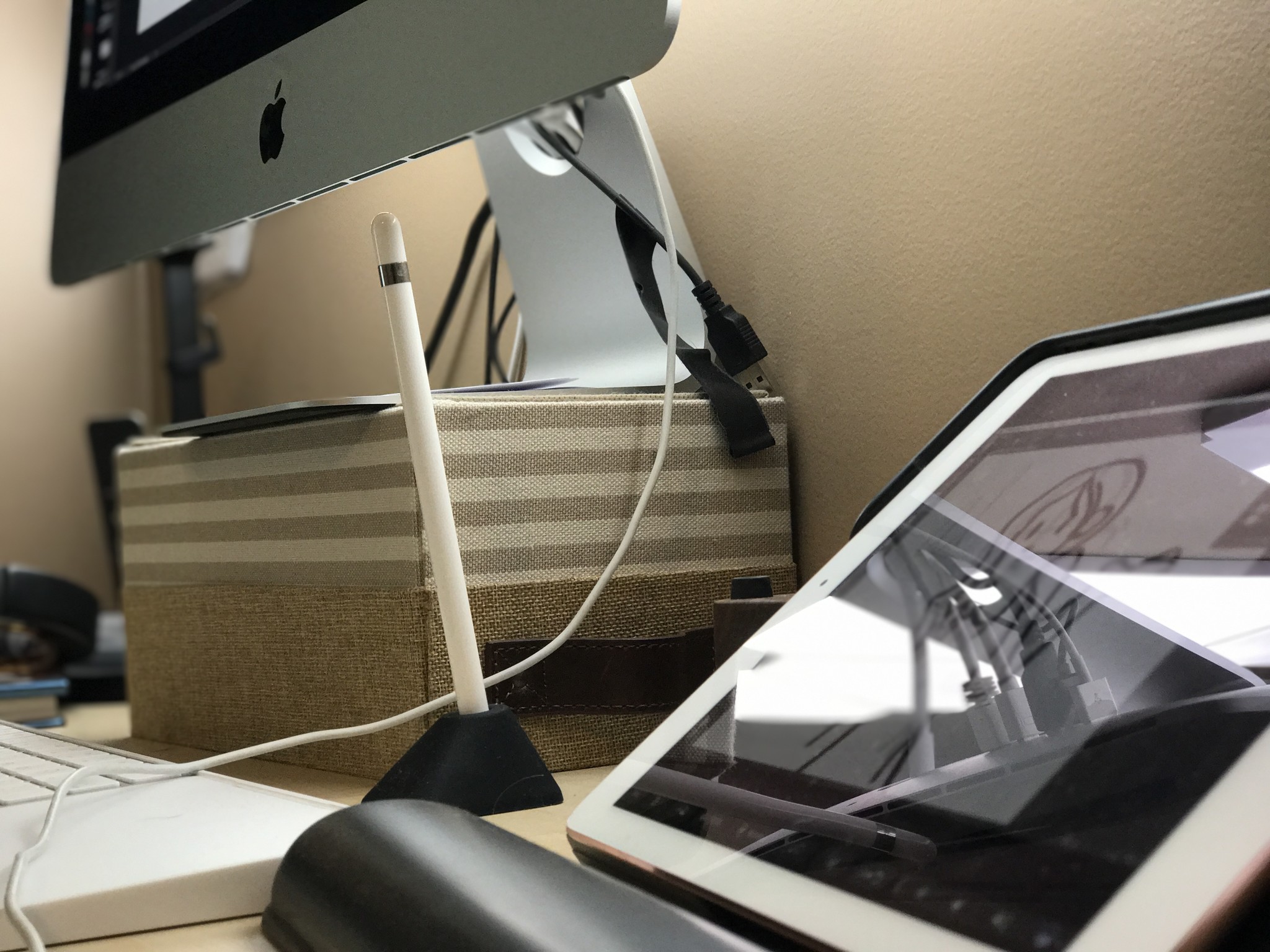
You can draw directly on your iPad with many, many great programs; while the iPad Pro and Pencil now offer professional artists more opportunity to create print-quality work, most still finish their projects on the Mac.
To keep your iPad useful while working on your Mac, you can use a second-screen app to effectively "take over" your iPad's screen and either make it a second monitor or mirror your Mac's display outright. These apps connect to your computer using a (usually paid) app on your iPad and a free "helper" app on your Mac. From there, you can use touch commands on your iPad to directly control your Mac and even use your Apple Pencil for pressure-sensitive drawing inside certain apps. It's often referred to as a Cintiq-like experience in homage to the Wacom Cintiq, one of the first and best pressure-sensitive external displays for the Mac.
Duet Display
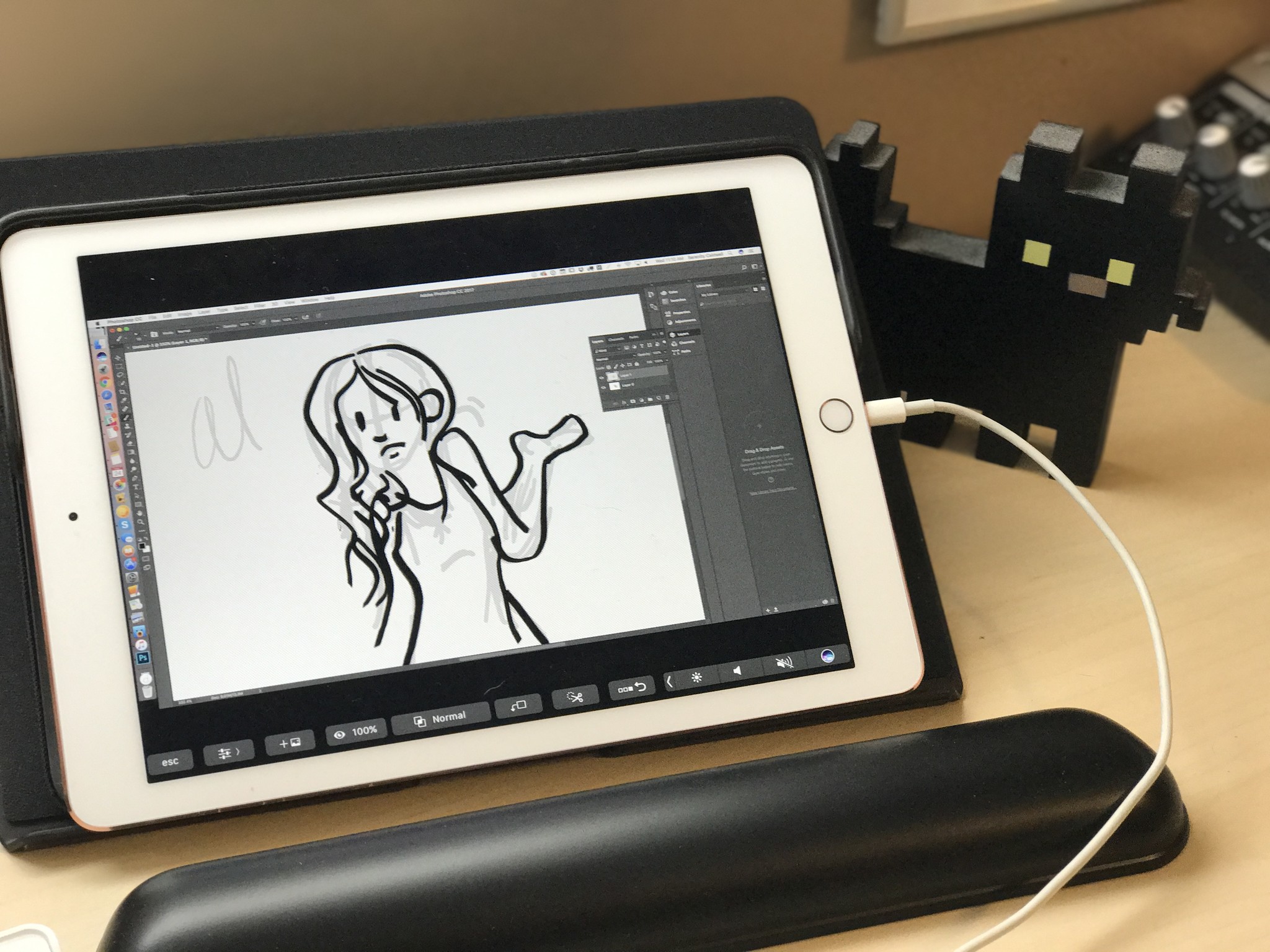
Though not the first second-screen app for iPad, Duet Display was one of the first to truly offer a usable second-screen experience. After connecting iPad to Mac via USB, it delivered users a Retina-quality second display at 60 frames per second, with minimal to no lag.
Master your iPhone in minutes
iMore offers spot-on advice and guidance from our team of experts, with decades of Apple device experience to lean on. Learn more with iMore!
For those who wanted to view extra information — Twitter or work apps from their Mac on a second screen, for example — Duet was an excellent choice, and remains so today.
Unfortunately, where Duet initially lagged was with the art community — users who wanted that second screen for drawing on a digital Photoshop canvas (or mirroring the Mac's display to draw upon it): The otherwise speedy 60FPS screen had issues displaying Photoshop documents and vast-delayed strokes, making the drawing experience uninspired as a whole.
In the years since, Duet has improved its original app with options like a digital Touch Bar (for Macs without access to Apple's own hardware version), even faster rendering, and iPhone support — but no drawing capabilities, despite competition from newcomer Astropad.
In late May, Duet at last offered a solution: an in-app Duet Pro subscription, which enables pressure sensitivity and line prediction for artists, among other tools. (We'll talk about Duet Pro in just a little bit.) Duet Display's standard version still offers no drawing tools or pressure sensitivity, however.
Duet Display - See on the App Store
Astropad Standard
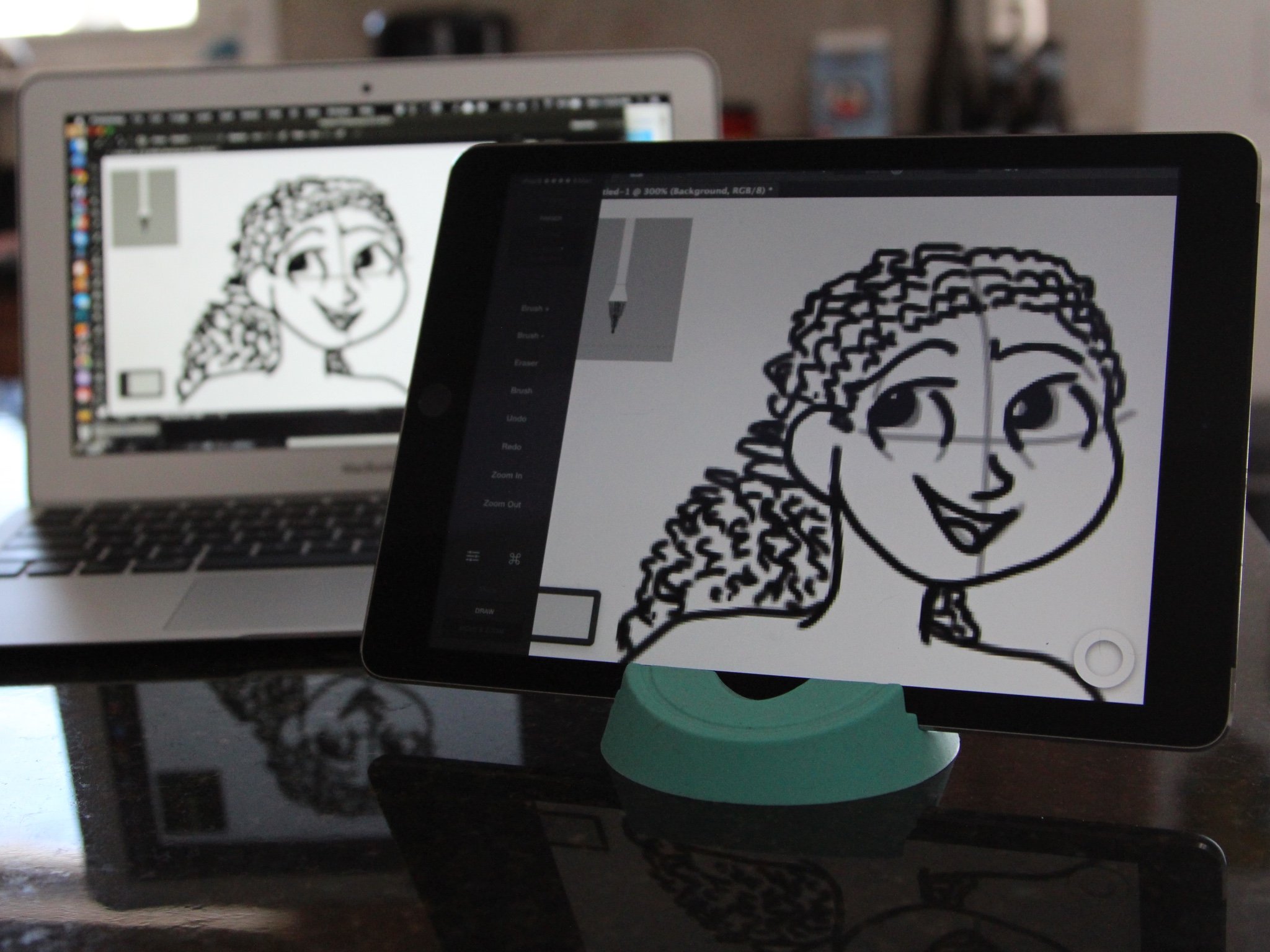
Astropad was the first app that offered iPad users a truly great drawing tablet for their Mac: It was built specifically for working in certain Mac programs, like Photoshop, and offered ultra-low latency for drawing through smart hardware optimizations.
Unlike Duet Display, Astropad focuses solely on mirroring your Mac's screen — you can't use it as a true second monitor. But in mirroring the screen, it offers a host of different drawing features for artists.
For one, Astropad displays a dismissible Function bar that holds oft-used drawing shortcuts like Undo, along with Line Preview, which eliminates further latency issues by "previewing" your drawing line (if your Mac hasn't yet caught up with your iPad's brush stroke).
Better yet, it takes advantage of pressure-sensitivity hooks in Mac apps to offer pressure-sensitive drawing for any number of third-party styluses — not only the Apple Pencil.
But perhaps the coolest thing about Astropad is that it can go wireless: You can draw tethered via USB for the best experience; if you don't mind suffering a minor drop in latency, however, you can sit elsewhere in your immediate Wi-Fi surroundings and continue to draw. (For instance, you can perch on your couch and continue to work on a project on your iMac or Mac Pro.)
Astropad has remained one of the best apps around for basic iPad drawing on your Mac, especially if you don't yet own an iPad Pro and Apple Pencil, since it works with many iPads and styluses. It is a little pricier than the standard Duet Display app, however — $29.99 to Duet's $19.99 one-time fee.
Astropad Standard - See on the App Store
Duet Pro
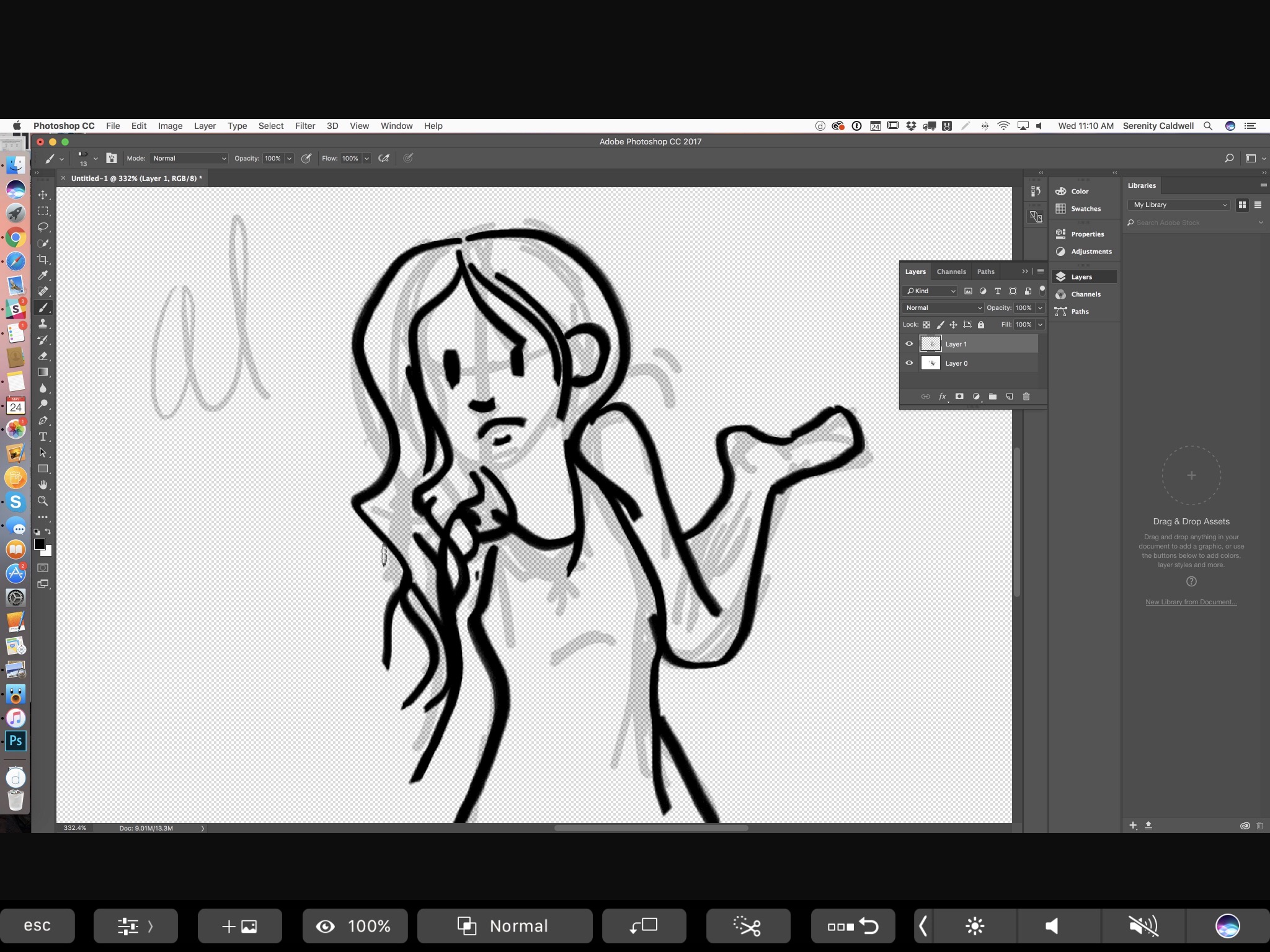
Launched in May of 2017, Duet Pro is Duet Display's venture into the iPad-as-pressure-sensitive-drawing-tablet world. Launching five months after the debut of Astropad Studio, Duet Pro offers many of the same perks as Astropad's high-end software — with a few extra wrinkles.
Like Astropad Studio, Duet Pro is a subscription service: For $20/year, users get access to Duet Display's new drawing features, including Apple Pencil-optimized pressure sensitivity, tilt and hover support, palm rejection, and touch-based shortcuts.
When setting up Duet Pro, users can customize pressure sensitivity with a personalized curve, adjusting based on how they draw and use the Apple Pencil, along with Line Lead (similar to Astropad's feature, though lacking in any sort of color customization).
Duet's big advantage over Astropad is its true second-screen nature for iPad Pro users: You can have a drawing tablet that also acts as a second monitor, eliminating the need to take up your Mac's main screen with a giant Photoshop canvas. (It's still USB-tethered, however — there's currently no Wi-Fi option.) In lieu of customizable digital shortcuts, Duet Pro offers a digital version of Apple's Touch Bar — if the app supports it, you'll be able to view (and change, if applicable) Touch Bar shortcuts along the bottom of the screen.
Currently, Duet only offers support for about 20 drawing apps, though big players like Adobe, Microsoft, Autodesk, and Pixelmator are all included.
One thing to note about Duet Pro: It's built as an in-app purchase inside Duet Display; to access Duet Pro, you'll first have to purchase Duet Display, effectively making your first year's costs $39.99, with subsequent years at $19.99.
Duet Pro - See on the App Store
Astropad Studio
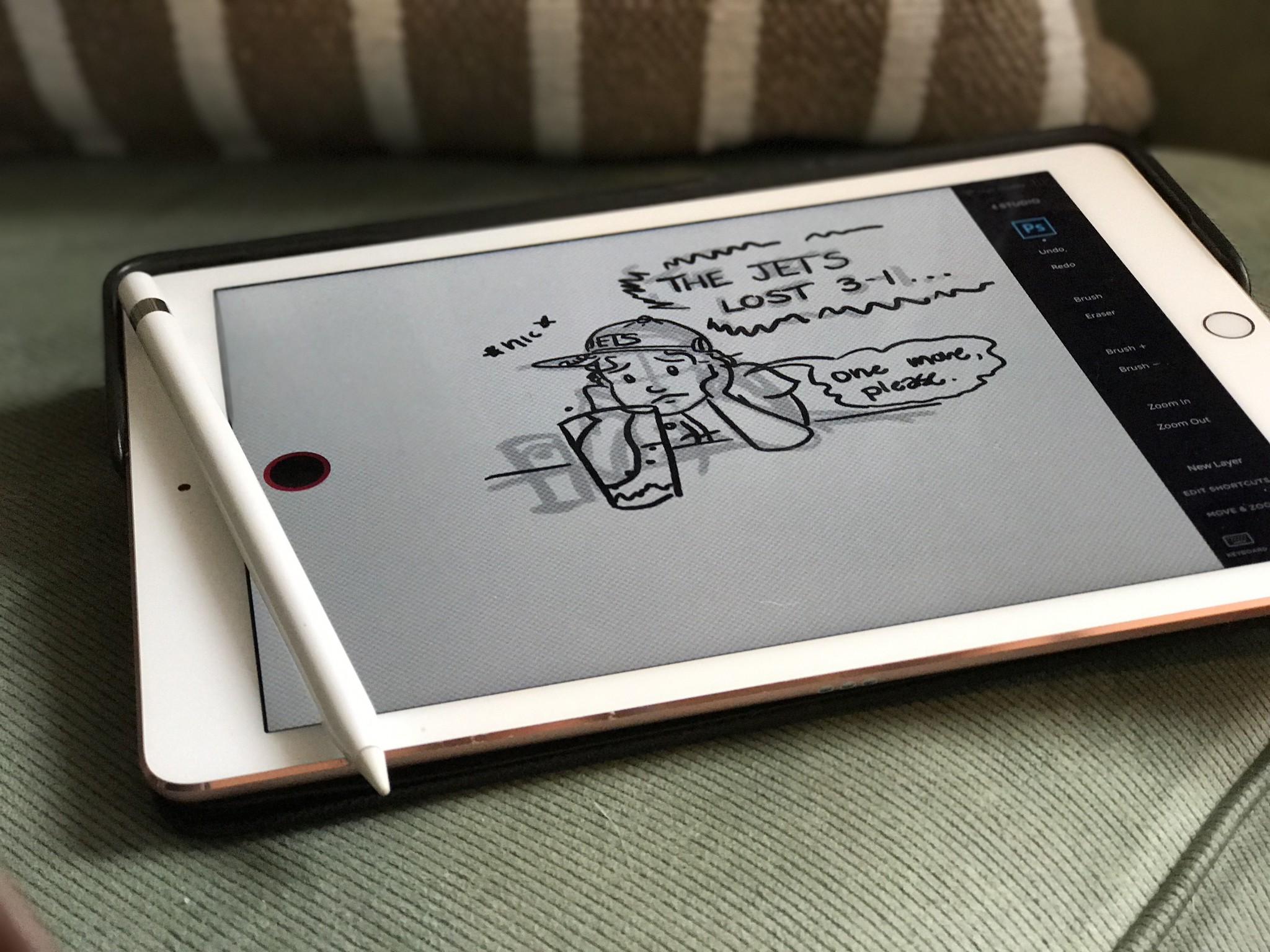
The most expensive drawing tablet option for professional artists, Astropad Studio is also arguably the most full-featured. It takes all the goodies present in Astropad Standard and makes them faster and more customizable.
As with Astropad, the Studio option offers you pressure-sensitive drawing with palm rejection and lightning-quick drawing; it also continues to offer a Wi-Fi option, with improved latency over Astropad Standard.
Where Studio zooms away is on customization for pro users. Unlike Standard, it's limited to iPad Pro and Pencil users, which allows the app to provide an even speedier drawing experience. Both drawing pressure and smoothing can be adjusted, and users have full control over shortcuts buttons on a per-app basis, allowing them to tweak the tools they want for each individual program. Studio's Line Preview can also be altered to shorten or lengthen the amount of virtual line, change its color, or turn it off entirely.
Studio also offers what may be the coolest touch implementation for iPad and Mac in the form of Magic Gestures: These touch- and Pencil-based gestures let you use your fingers and stylus together to activate a Right-Click, Eraser, Hover, or Modification Keys, depending on your choice.
Astropad Studio - See on the App Store
Which is best for casual artists?
For those who want to tool around with an iPad on their Mac every so often, it's a tight spec competition between Astropad Standard and Duet Pro. Both offer great options for pressure sensitivity, though Duet provides more customization on the pressure curve and offers a digital Touch Bar. In contrast, Astropad Standard offers more limited options, but it can connect to any app on your Mac with full pressure support, and on non-iPad Pro models with third-party styluses. It's also cheaper in the long run ($29.99 one-time vs $19.99/year), and offers wireless drawing.
Astropad has the seniority edge in the iPad-as-drawing-tablet game, and for that reason alone, it gets my vote for best casual artist tool. In my tests with Duet Pro, I frequently ran into minor bugs — a black screen when switching between second screen and mirrored mode, a non-functional Touch Bar — along with occasionally-spotty latency on the iPad Pro's Line Lead. Astropad, in contrast, has had several years to settle into a rock solid program, and that stability shows in everyday use.
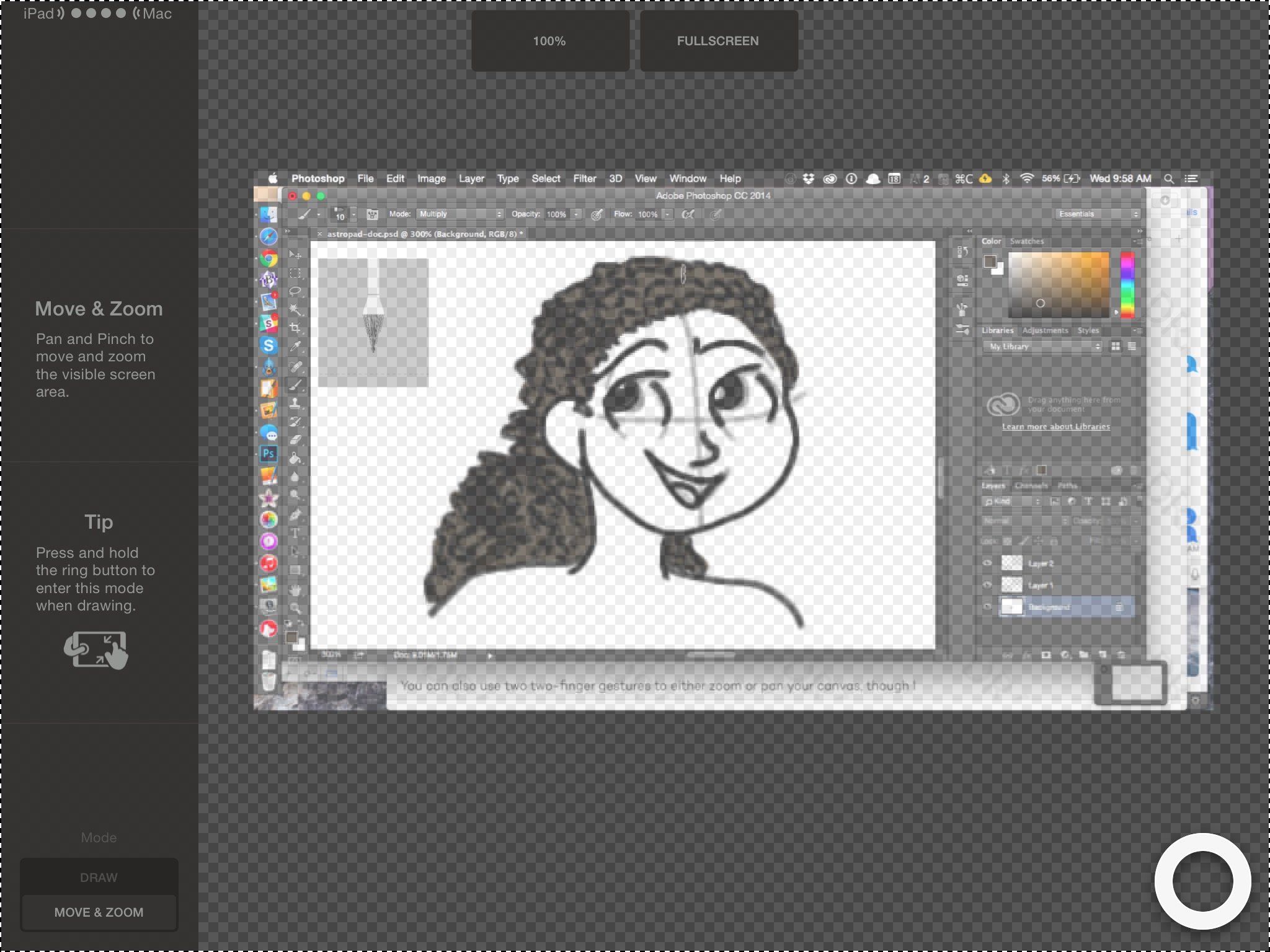

Astropad Standard has had more years of development behind it, and can withstand recropping or moving displays with no lag or problems; I ran into a few bugs with Duet Pro.
That said, the advantage to a subscription model is that Duet's development team is likely hard at work making Duet Pro even better for its users; I wouldn't be surprised to see the app evolve and grow as more "prosumer" and professional artists weigh in on their hopes and desires for the software.
Duet Pro might also be worth considering if you'd prefer to use your drawing tablet as a second display, rather than a mirrored option — neither Astropad Standard nor Studio currently offer this option.
Which is best for professional artists?
Duet Pro, despite its name, can't currently compete with the juggernaut that is Astropad Studio. There's a reason Astropad's developers charge such an elevated yearly fee for its software in comparison to Duet Pro: its features are reliable, endlessly customizable, and they simply feel like the right way to do professional drawing on the Mac.
As nice as a digital Touch Bar is, years of Wacom work have conditioned me for big shortcuts on the left or right of my drawing surface; Astropad's customizable shortcuts are easy to see when I need them, and vanish into the background when I don't. It's also very easy to quickly adjust line pressure and various settings while connected to my Mac; Duet currently requires you to bring up its settings menu with a four-finger tap or disconnect to adjust accordingly.
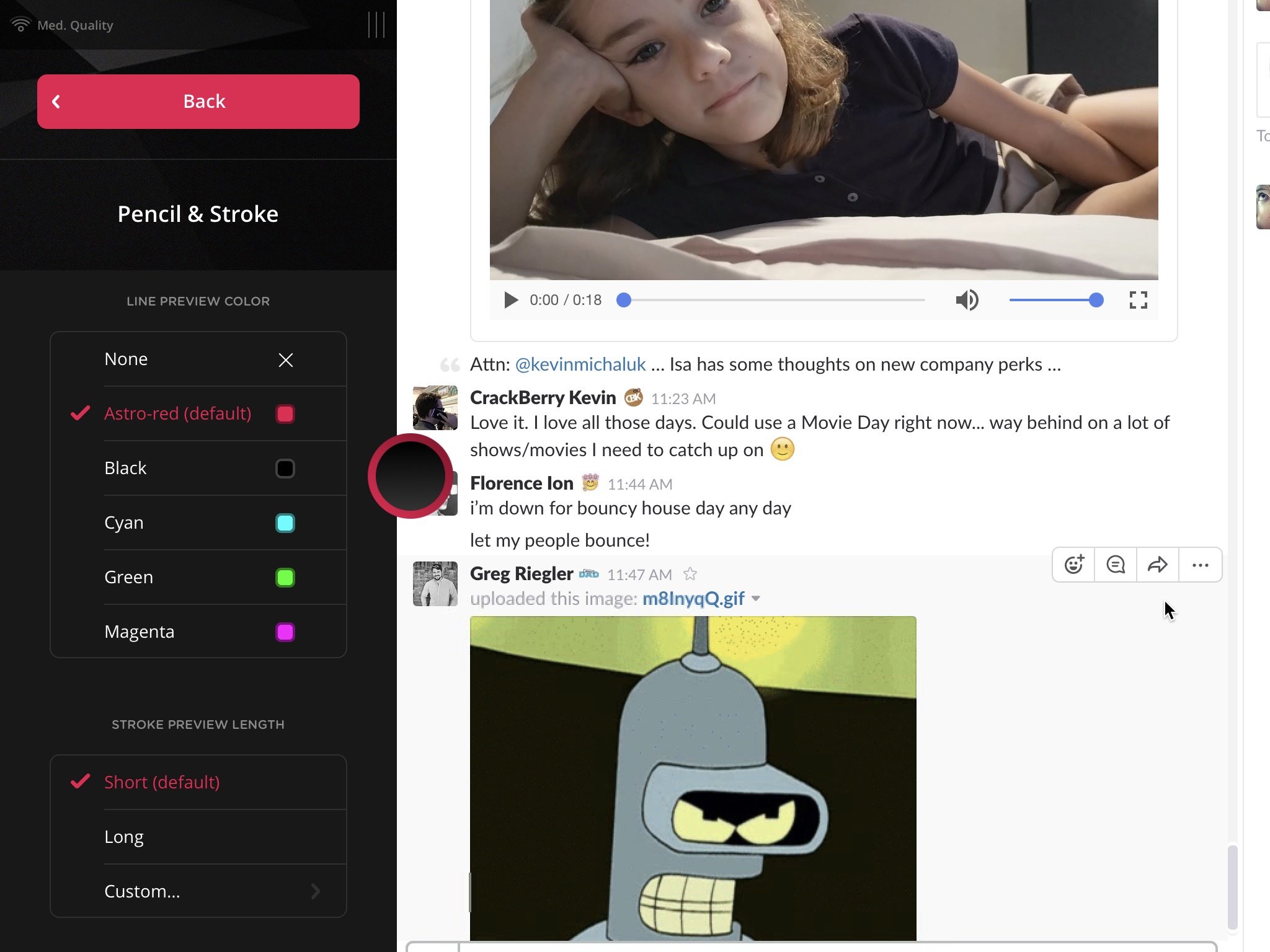
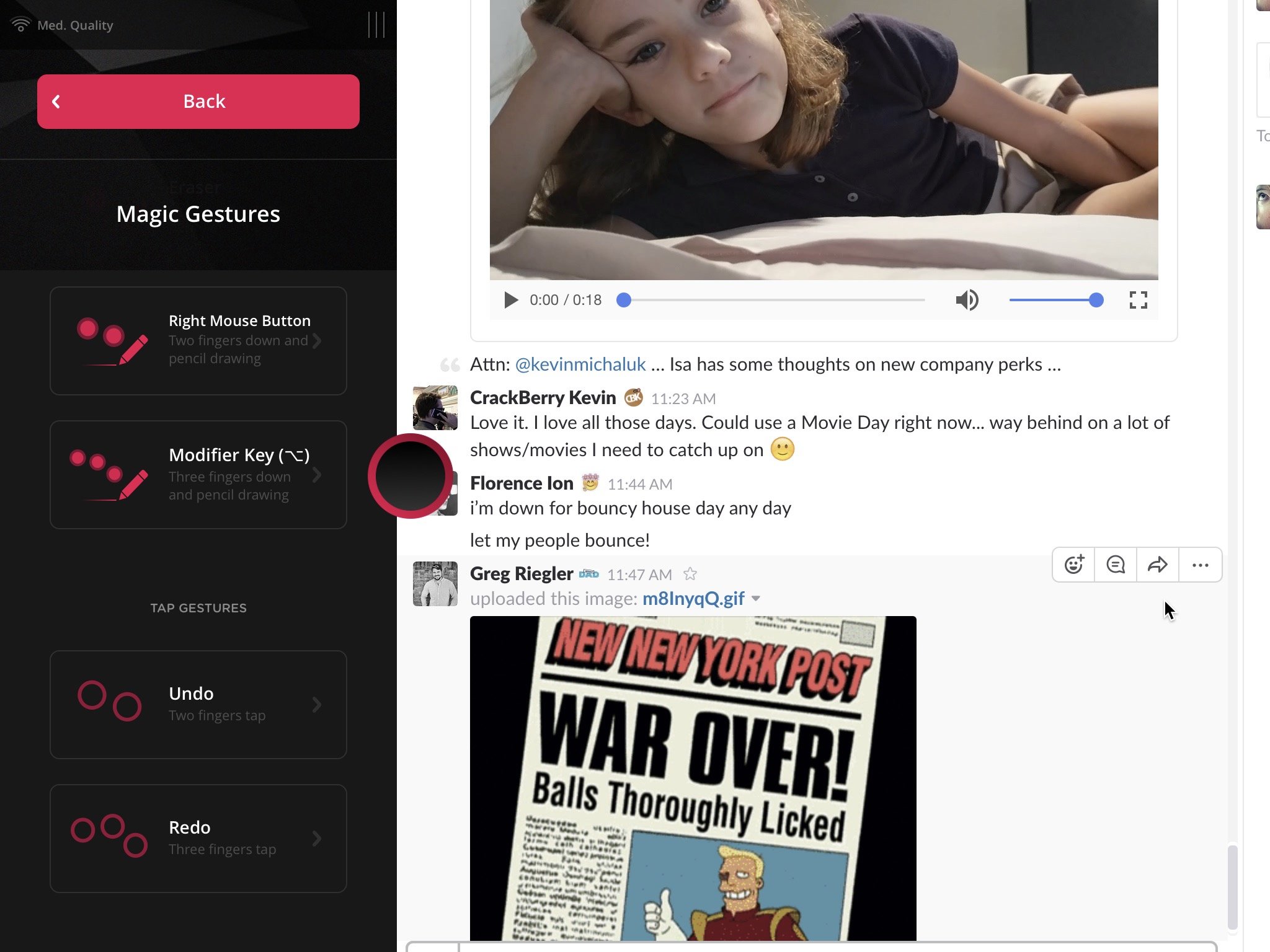
Some of Astropad's Line Preview and Magic Gestures customization options.
The same goes for Astropad's Magic Gestures and touch shortcuts: I can easily refresh my memory on a given shortcut or trick via the shortcuts bar, whereas I have to return to Duet's "Connecting" screen to get a refresher course.
But in all honesty, the difference I keep coming back to is the wireless advantage: Astropad Studio has perfected a latency-light drawing experience without being tethered to your Mac, and once you get used to working wirelessly, it's very hard to convince yourself to go back to a wired connection — especially when Astropad Studio's implementation is so good.
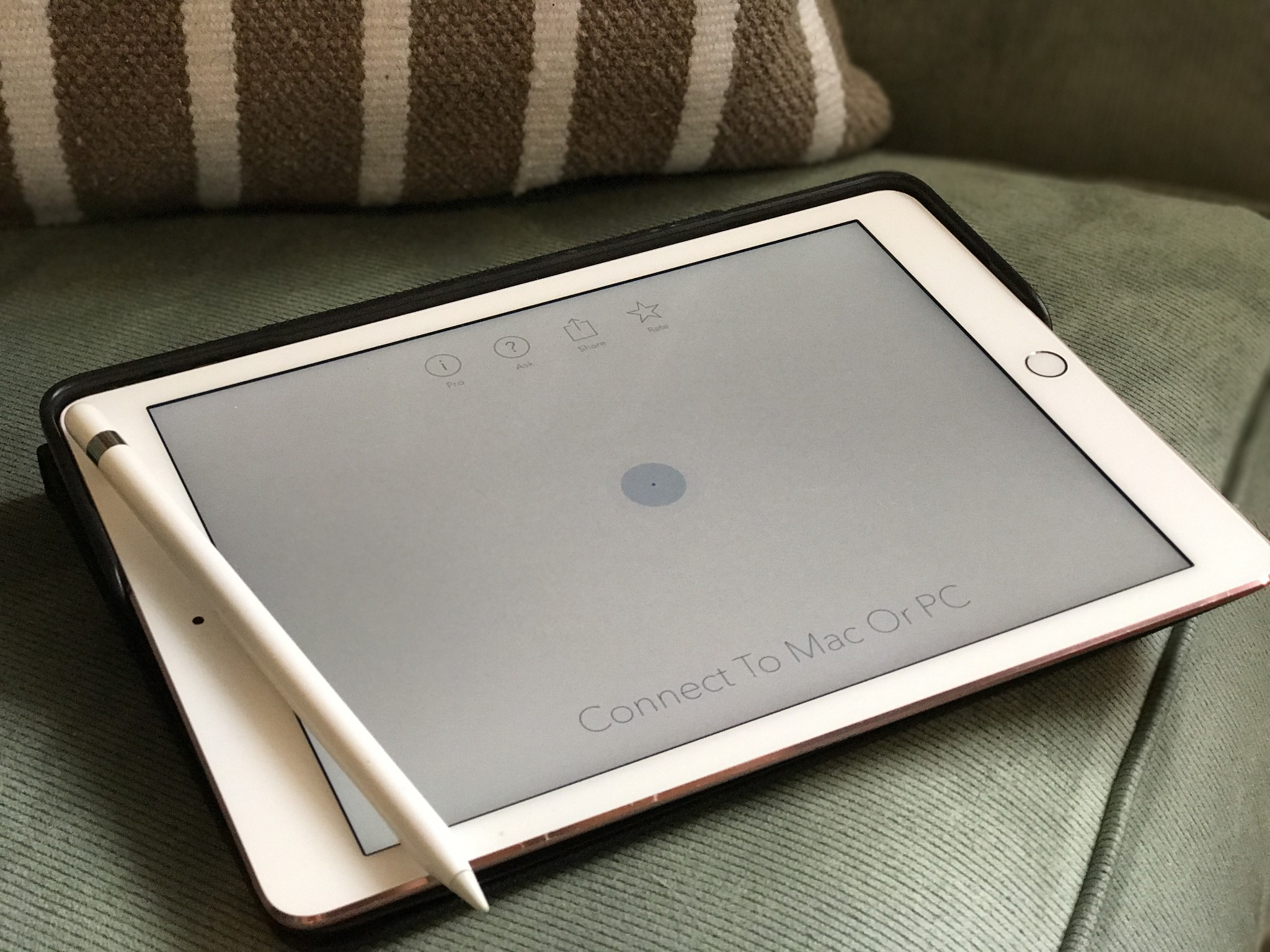
Of course, the nicest thing both of these apps using the subscription model is that anyone can take them for a spin: Both Duet Pro and Astropad Studio offer a free trial before your subscription kicks in, and whatever my personal feelings on each app, I highly recommend pro artists download both and take them for a spin. After all, when it comes to iPad art, you never know what your own personal preferences will end up being.
Serenity was formerly the Managing Editor at iMore, and now works for Apple. She's been talking, writing about, and tinkering with Apple products since she was old enough to double-click. In her spare time, she sketches, sings, and in her secret superhero life, plays roller derby. Follow her on Twitter @settern.
